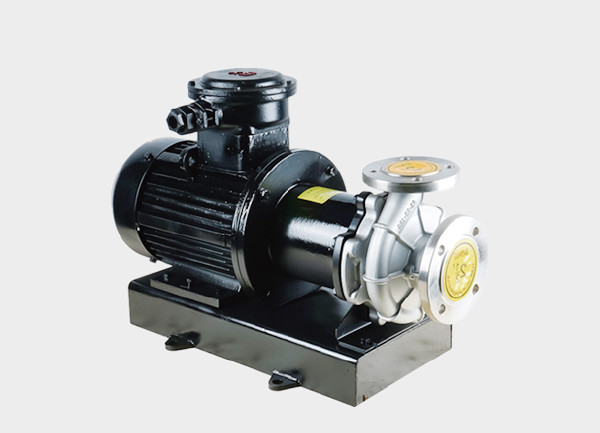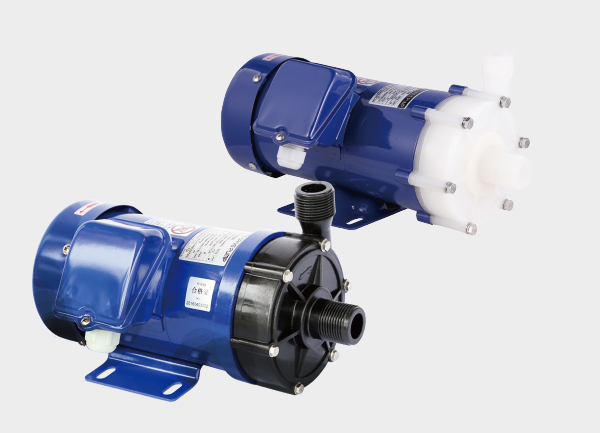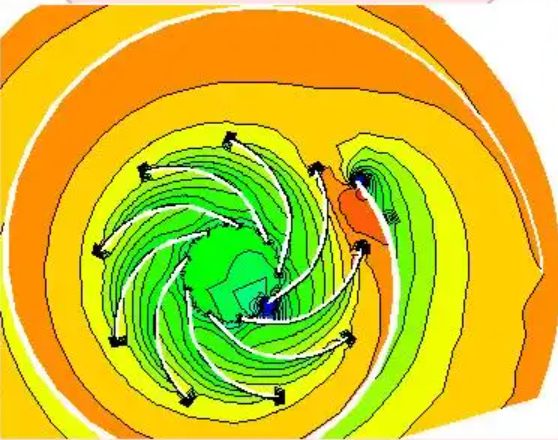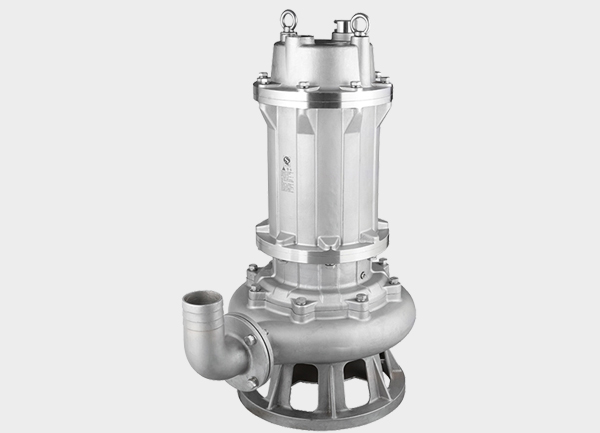1. Technical Overview
A Magnetic Drive Water Pump is a type of pump that uses magnetic coupling for liquid transfer. Unlike traditional centrifugal pumps, magnetic pumps eliminate the risk of mechanical seal leakage through non-contact power transmission. This makes them ideal for transporting corrosive, toxic, or high-purity liquids.
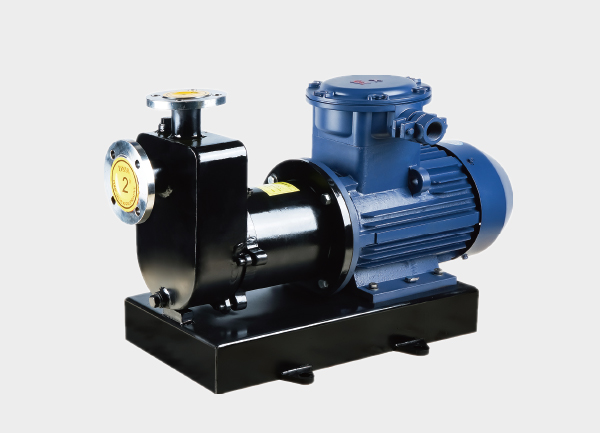
Core principle:
Magnetic coupling transmission: The internal impeller (rotor) is driven by an external magnetic rotor connected to a motor, transmitting torque through a magnetic field.
Fluid isolation: An isolation sleeve separates the fluid from the motor and external magnets, ensuring fully sealed operation with zero leakage.
Non-contact mechanical design: Eliminates friction from traditional bearings or mechanical seals, reducing energy loss and heat generation.
2. Structure and Material Insights
The performance of a magnetic water pump depends heavily on its design:
| Component | Function | Engineering Requirement |
|---|---|---|
| Pump body & cover | Withstand fluid pressure | High-strength stainless steel (304/316), engineering plastics (PP, PVDF), or corrosion-resistant alloys |
| Isolation sleeve | Magnet transmission & fluid separation | Must be corrosion-resistant, pressure-resistant, and mechanically strong; often metal-polymer composites |
| Magnetic rotors (inner & outer) | Non-contact driving | High-performance permanent magnets (NdFeB), ensuring strong coupling and demagnetization resistance |
| Impeller | Fluid transfer | Hydrodynamic optimization to reduce cavitation, increase efficiency, and minimize NPSHr |
| Bearings & support | Rotor support | Precision ceramic or metallic bearings with high wear and corrosion resistance |
Material selection logic:
Strong corrosive liquids → PVDF/PTFE sleeve + 316L pump body
High-temperature fluids → Heat-resistant metal or ceramic sleeves
High-purity fluids → Full stainless steel or pharmaceutical-grade materials
3. Working Principle and Fluid Dynamics
Magnetic pumps are centrifugal in nature, but non-contact drive changes energy transfer dynamics:
Torque transmission:
T=km⋅M(Torque proportional to magnetic force)T = k_m \cdot M \quad (\text{Torque proportional to magnetic force})T=km⋅M(Torque proportional to magnetic force)
Where torque depends on magnet size, flux density, pole spacing, and sleeve thickness.
Fluid dynamics considerations:
Impeller design must balance flow-head curve, efficiency, and minimum suction pressure (NPSHr).
Magnetic pumps are sensitive to cavitation, especially with corrosive or high-temperature liquids, requiring careful impeller geometry and speed control.
Thermal characteristics:
Reduced friction limits heat generation.
Magnetic coupling efficiency is less than 100%; large gaps can produce eddy current losses and temperature rise.
Sleeve thermal expansion and magnet demagnetization must be considered in high-temperature operations.
4. Performance Advantages and Engineering Considerations
Key advantages of magnetic water pumps:
Zero leakage operation: Safe for toxic or corrosive liquids.
High reliability: Reduced mechanical wear lowers maintenance frequency.
Low noise and smooth operation: Non-contact drive reduces vibration.
Flexible design: Suitable for corrosive, high-temperature, high-pressure, or high-purity liquids.
Engineering selection logic:
Fluid properties: Corrosiveness, viscosity, temperature, particle content
Flow and head requirements: Match pump curve to system design
Magnetic torque matching: Prevent rotor slip
Maintenance cycle & lifecycle cost: Higher upfront cost but lower long-term maintenance
5. Applications and Industry Trends
Typical applications:
Chemical industry: Acid, alkali, and organic solvent circulation
Pharmaceutical & food: Pure water, medicinal liquid transfer, hygiene-sensitive liquids
Semiconductor & electronics: CMP slurry and chemical circulation
New energy & laboratory: Lithium battery and photovoltaic liquid circulation
Trends:
High-performance magnetic pumps are evolving toward high flow, high pressure, high temperature, and high corrosion resistance.
Integration with smart control systems enables remote monitoring and predictive maintenance.
New materials (ceramic magnets, heat-resistant composites) improve pump efficiency and lifespan.
6. Summary
A magnetic water pump is more than a “zero leakage pump”; it is an advanced engineering system combining magnetism, fluid dynamics, materials science, and mechanical design. Its precise engineering and multi-disciplinary approach make it a high-reliability solution for liquid transfer in chemical, pharmaceutical, electronics, and environmental applications.



